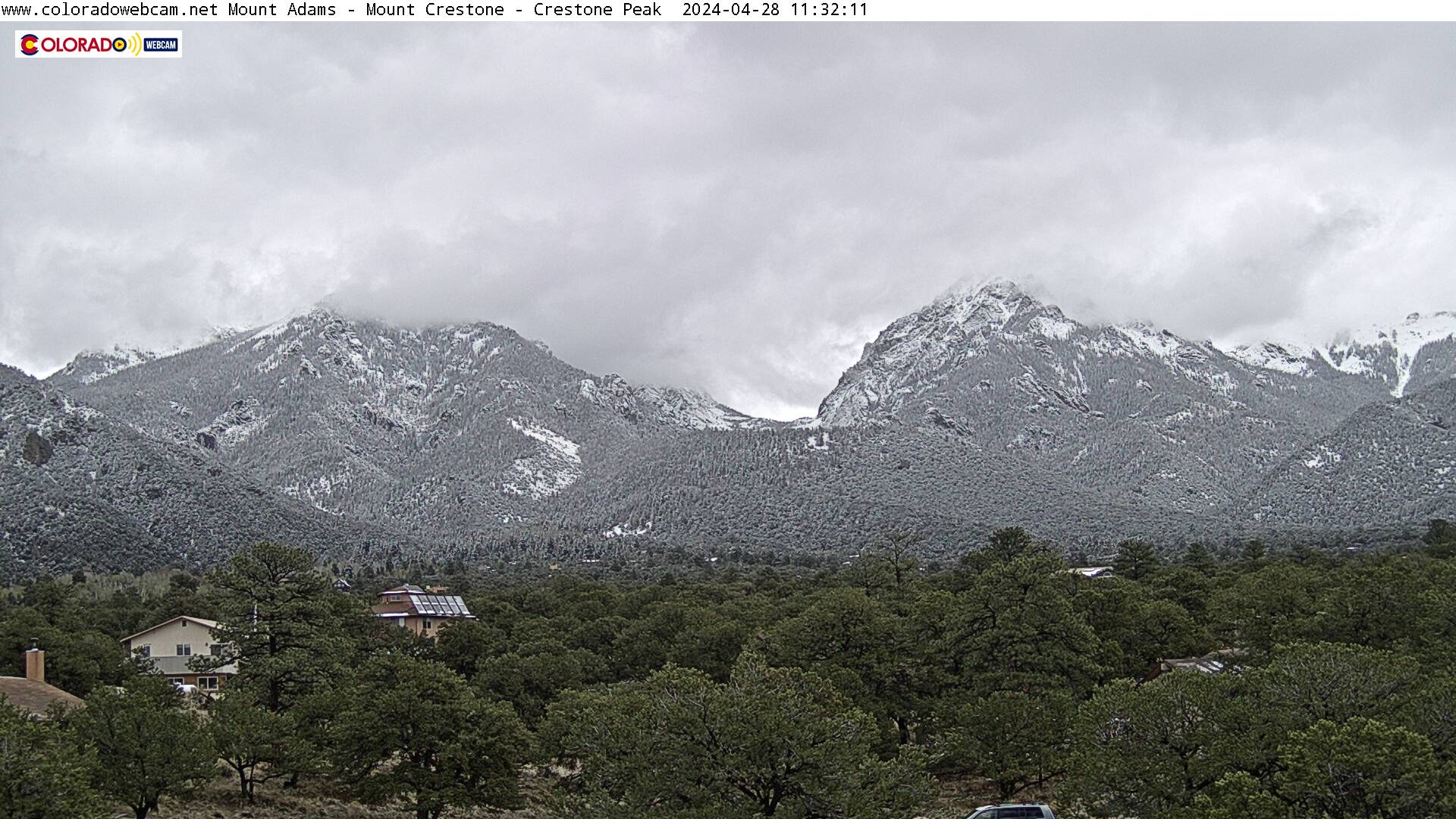Crestone/Sangre de Cristo Mountains, Colorado Weather Cams
Sangre De Cristo Mountains Crestone Cam (via Coloradowebcam.net)

Blanca Peak Crestone Cam (via Coloradowebcam.com)

Crestone Collegiate Peaks (via Coloradowebcam.net)

Crestone, Colorado: A Spiritual Haven in the Shadow of the Sangre de Cristo Mountains
Crestone/Sangre de Cristo Mountains, Colorado Weather Cams. Nestled at the base of the Sangre de Cristo Mountains, Crestone, Colorado, is a town unlike any other. With a population of just over 140 residents, it is known for its spiritual centers, stunning landscapes, and rich history. From its origins as a mining town to its transformation into a spiritual retreat, Crestone has long been a place of convergence—where nature, history, and human ambition intertwine.
Early History: Indigenous Presence and Spanish Exploration
Long before European settlers arrived, the San Luis Valley, where Crestone is located, was home to Ute, Navajo, and Apache tribes. These Indigenous groups relied on the valley’s abundant wildlife, water sources, and sacred landscapesfor survival. The Sangre de Cristo Mountains, with their towering peaks and deep canyons, held spiritual significance for many Native peoples.
Spanish explorers ventured into the region in the late 16th century, searching for gold and trade routes. While Spanish settlement was limited, their influence remains visible in place names and cultural traditions.
The Mining Boom and the Founding of Crestone
Crestone was officially platted in 1880 by George Adams, the owner of the Luis Maria Baca Grant No. 4. The town was initially established as a gold mining settlement, attracting prospectors eager to tap into the mineral wealth of the Sangre de Cristo Mountains.
In 1900, Adams, with the help of Eastern investors, reopened one of the more promising gold mines and built a railroad spur to connect Crestone to the outside world. However, the boom was short-lived, as the mines failed to produce significant ore. By 1948, Crestone had dwindled to a population of 40 residents, primarily ranchers and retirees.
The Transformation into a Spiritual Center
Crestone’s identity underwent a dramatic shift in the 1970s, when Maurice and Hanne Strong, a Canadian businessman and his wife, purchased land in the area. Inspired by the region’s natural beauty and spiritual energy, they envisioned Crestone as an interfaith retreat.
Through the Manitou Foundation, the Strongs donated land to Buddhist, Hindu, Christian, and Native American spiritual organizations, fostering a diverse spiritual community. Today, Crestone is home to more than two dozen retreat centers, monasteries, and temples, making it one of the most spiritually concentrated places in the United States.
The Sangre de Cristo Mountains: A Geological and Cultural Landmark
The Sangre de Cristo Mountains, which rise dramatically east of Crestone, are the southernmost subrange of the Rocky Mountains. Stretching from Poncha Pass in Colorado to Glorieta Pass in New Mexico, the range is known for its rugged peaks, alpine lakes, and deep valleys.
The name Sangre de Cristo (Spanish for “Blood of Christ”) is believed to have originated in 1719, when Spanish explorer Antonio Valverde y Cosio witnessed the mountains glowing red at sunrise. The range includes several fourteeners, such as Crestone Peak, Crestone Needle, and Blanca Peak, which attract climbers and adventurers.
Conservation and Outdoor Recreation
Much of the Sangre de Cristo Mountains is protected within national forests and wilderness areas, including the Rio Grande and San Isabel National Forests. The region offers hiking, camping, and wildlife viewing, with trails leading to remote alpine lakes and high-altitude summits.
The Great Sand Dunes National Park and Preserve, located on the western edge of the range, features the tallest sand dunes in North America, formed by wind patterns and sediment deposits over thousands of years.
Modern Crestone: A Balance of Tradition and Innovation
Today, Crestone remains a small but vibrant community, attracting spiritual seekers, artists, and outdoor enthusiasts. The town’s economy is largely based on tourism, spiritual retreats, and eco-tourism. Efforts to preserve its natural environment and cultural heritage ensure that Crestone continues to be a unique and cherished place.
From its mining roots to its spiritual renaissance, Crestone’s history reflects the enduring power of place and transformation. Whether exploring its sacred sites, hiking its mountain trails, or experiencing its quiet solitude, visitors find themselves drawn to the mystical energy of Crestone and the Sangre de Cristo Mountains.
For more information, visit the Alamosa, Colorado official website.
